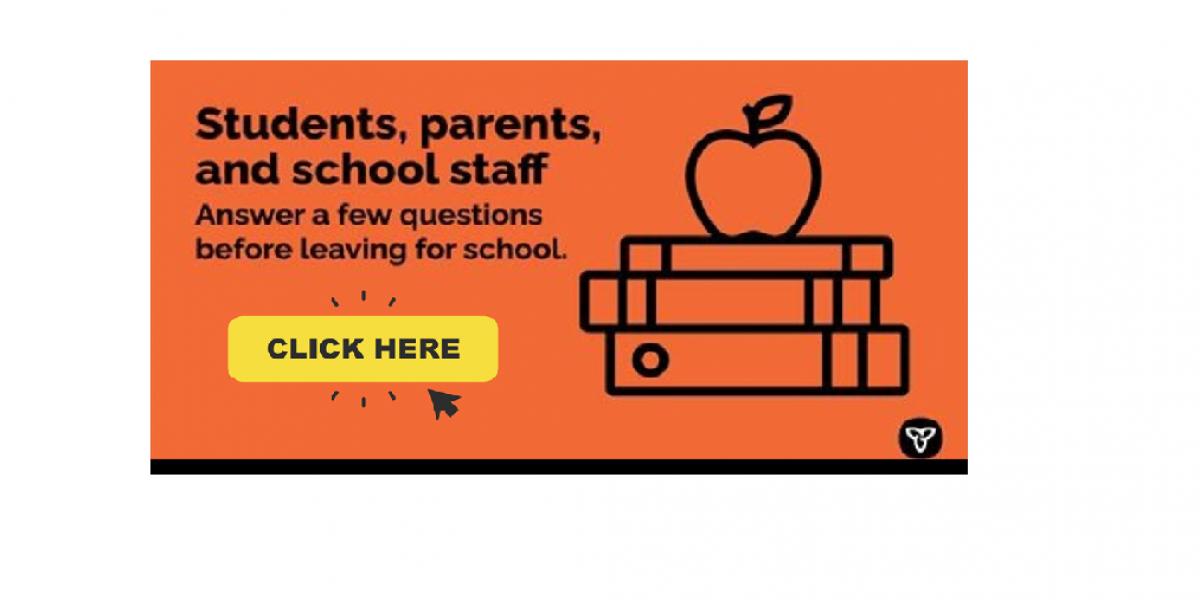Over the last few weeks, educational institutions have been working hard to plan a safe return to school. The school boards in our catchment area have adopted policies and procedures, based on provincial and public health recommendations, to help protect their students and staff during the school year. Below you will find MFHT’s interpretation of the advice that is being shared with students and their families. It is our hope that this summary will help parents and caregivers understand when it’s considered safe/unsafe to send their child(ren) to school.
Keep your child home from school if they…
- Have travelled outside of Canada in the last 14 days
- Have had any close contact with a person with COVID-19 or someone you think may have COVID-19 In the last 14 days (a close contact is someone that you live with or has been within 2 meters of you for more than 15 minutes)
- Have one (or more) symptoms of COVID-19
Symptoms of COVID-19 include the following:
- Fever (feeling hot to the touch, a temperature of 37.8 °C or higher)
- Chills
- New or worsening cough
- Barking cough or making whistling noises when breathing (croup)
- Shortness of breath (out of breath, unable to breathe completely)
- Sore throat and/or trouble swallowing
- Runny, stuffy or congested nose
- Lost sense of taste or smell
- Pink eye (conjunctivitis)
- Headache that’s unusual or long lasting
- Nausea, vomiting, diarrhea, or stomach pain
- Muscle aches that are unusual or long lasting
- Unexplained fatigue (lack of energy)
- Sluggishness or lack of appetite (especially in young children)
Reading this list may have left you feeling a little bit defeated. We understand – kids can experience symptoms that are consistent with COVID-19 often, especially during cold and flu season. In times of COVID-19, this can unfortunately lead your family to taking quite a few sick days. Some young people may also have allergies or a pre-existing medical condition that causes them to experience some of the symptoms listed above. In this case, ask yourself if the symptoms are considered ‘normal’ for your child. If the answer is ‘yes’, your child can go to school.
If the symptoms are new, unusual or atypical for your child, they should self-isolate and be tested for COVID-19. Unfortunately, there is no way of knowing the difference between a cold or flu and COVID-19. Therefore, the safest and most responsible thing to do when your child develops symptoms that are consistent with COVID-19 is to stay home get tested for the virus if the symptoms are not considered typical for them.
When to return to school
If your child tests negative for COVID-19, they can return to school if all the following apply:
- They do not have a fever (without using medication)
- It has been at least 24 hours since their symptoms started improving (if they had symptoms)
If your child does not get tested for COVID-19, they should isolate for 14 days, unless all the following apply:
- A health care provider diagnosed them with another illness
- They do not have a fever (without using medication)
- It has been at least 24 hours since their symptoms started improving (if they had symptoms)
When to self-isolate
As a parent or caregiver, you may be wondering what to do if your child is required to self-isolate due to the onset of COVID-19 symptoms. Should you be self-isolating and getting tested for COVID-19, too?
Whether you need to self-isolate will depend on your symptoms and your child’s exposure to COVID-19. An “exposure” is considered to be any international travel, contact with a confirmed case of COVID-19 or attendance at a facility that is under an outbreak of COVID-19 in the past 14 days.
At this time, you (and the other household members of the child with symptoms of COVID-19) can continue to go to work and/or participate in your usual activities as long as you do not develop symptoms. Self-monitor for symptoms for 14 days and if you begin to feel unwell, stay home and seek COVID-19 testing.
If your child has an exposure, they must self-isolate for 14 days even if they don’t develop symptoms and test negative for COVID-19. As long as your child does not develop symptoms, you and other household members do not need to self-isolate. However, if your child develops symptoms within the 14-day isolation period, all members of your household must self-isolate and get tested for COVID-19. All household members can stop self-isolating 14 days after their last exposure and if their COVID-19 test result is negative.
MFHT recognizes that deciding to keep your child home from school can result in a cascade of events, such as needing to stay home from work to care for your child, booking COVID-19 testing and making temporary home-schooling arrangements. Although it may seem like a nuisance, remember that keeping your child home from school when they are feeling unwell is for the greater good – it will help protect their peers, teachers and other school personnel while limiting the spread of their illness in our schools and communities.
To help keep everyone safe, it is recommended to screen your child(ren) every day before school. To help you through the screening process, consider using the online COVID-19 School Screening Tool (https://covid-19.ontario.ca/school-screening/) that was developed for parents and caregivers by the Ministry of Health.
If you have any questions, please call the Thunder Bay District Health Unit or visit https://www.tbdhu.com/safereturn_parents. Public health professionals are here to support you during this transition and to provide you with the most up-to-date recommendations regarding a safe return to school.




